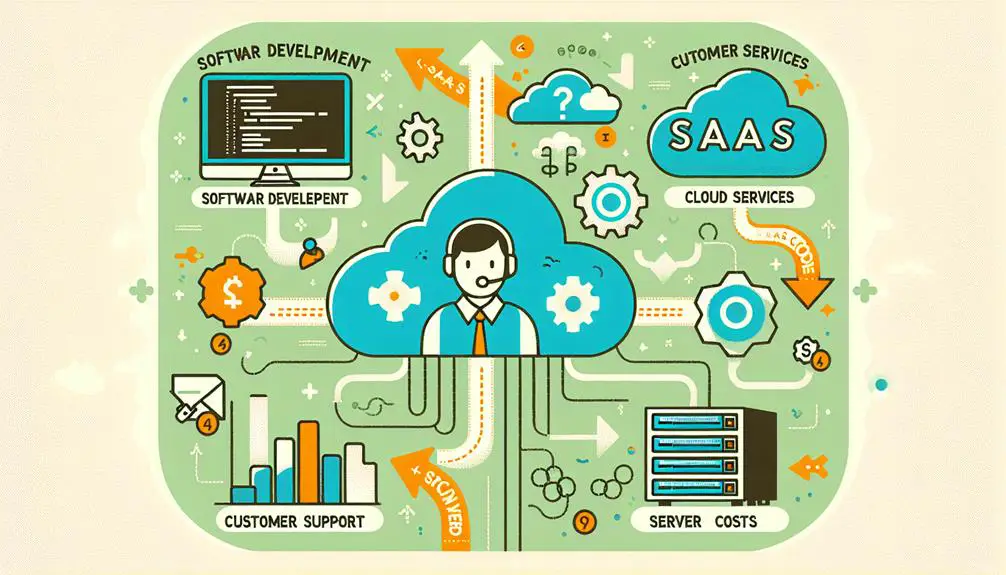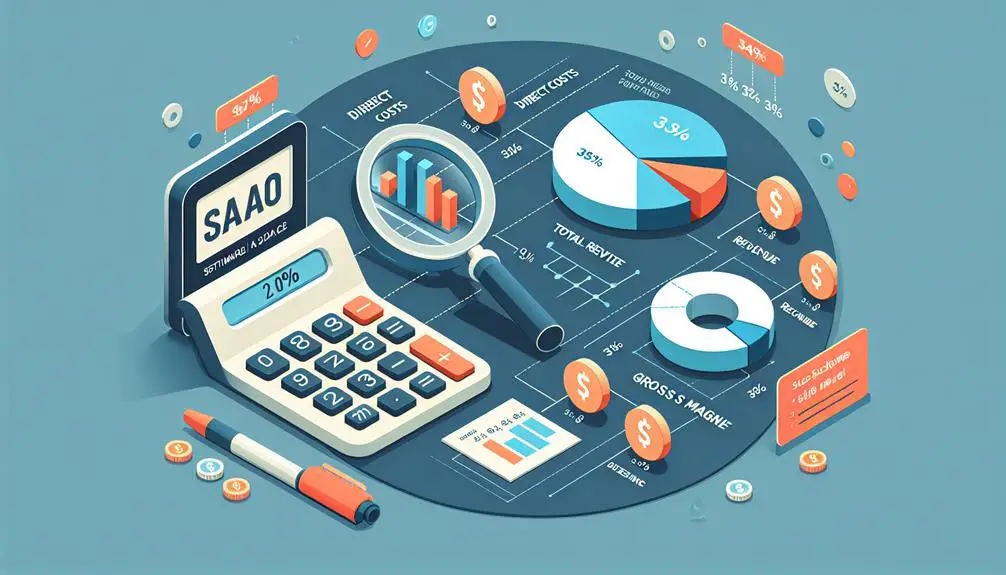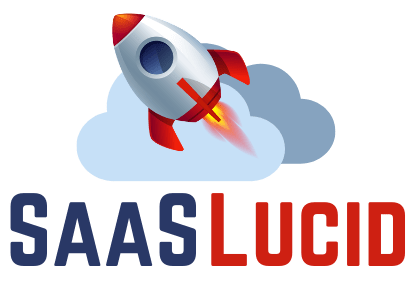Have you ever wondered if there's a foolproof way for SaaS companies to nail down their Cost of Goods Sold (COGS)?
It's a number that can make or break your understanding of profitability, yet it's notoriously tricky to get right.
You're likely familiar with the direct costs like hosting fees and software licenses, but it's the consistency in identifying and allocating these expenses that often trips companies up.
Calculating your COGS accurately is more than just an exercise in accounting; it's a strategic move that can significantly impact your bottom line.
Let's explore why getting this number right is critical and what missteps to avoid, setting the stage for a deeper conversation on optimizing financial health in the SaaS sector.
Contents
- 1 Key Takeaways
- 2 Understanding COGS
- 3 Direct Costs Breakdown
- 4 Indirect Costs Analysis
- 5 COGS Vs. CAC
- 6 Customer Success Impact
- 7 SaaS COGS Examples
- 8 Calculation Best Practices
- 9 C-Suite Communication
- 10 Cloud Cost Intelligence
- 11 COGS Components
- 12 COGS Vs. Cost of Sales
- 13 SaaS Gross Margin
- 14 Income Statement Insights
- 15 Frequently Asked Questions
Key Takeaways
- Identify direct costs including hosting, employee salaries, software fees, and customer support for accurate COGS calculation.
- Differentiate between direct and indirect costs to improve financial clarity and optimize expenses.
- Regularly update COGS calculations to reflect changes in direct costs and software licensing fees.
- Utilize cloud cost intelligence tools for detailed insights and effective cost optimization in SaaS operations.
Understanding COGS
To fully grasp how a SaaS company operates financially, it's essential to understand COGS, or the direct costs involved in delivering its subscription-based services. For SaaS businesses, COGS plays a critical role in illuminating the path to profitability and operational efficiency. Unlike traditional companies that deal with physical inventory, SaaS companies encounter a different set of costs. These expenses are directly tied to the provision of their services, including hosting expenses, software licenses, and support staff costs.
Understanding COGS isn't just about identifying these costs; it's about comprehensively managing them to better control spending and enhance your company's financial health. By accurately calculating COGS, subtracting it from your total revenue, you're able to determine your gross profit and gross margin. This calculation is pivotal for SaaS companies as it provides a clear view of profitability and efficiency without the distraction of inventory considerations.
For you, mastering COGS means gaining the ability to strategically navigate through the financial landscape of your SaaS business. It allows for a precise assessment of where your revenue is going and presents opportunities for cost optimization and improved profitability.
Direct Costs Breakdown
Now, let's break down the direct costs you'll encounter in your SaaS business, starting with identifying direct expenses and analyzing software licenses.
You'll find that hosting expenses, software licensing fees, and personnel costs for customer support teams are pivotal.
Understanding these costs is key to managing your company's profitability and optimizing operations.
Identifying Direct Expenses
Understanding the direct expenses crucial to SaaS companies involves breaking down costs like hosting services, employee salaries for specific roles, and third-party software fees. Accurately identifying these direct costs is key to mastering your COGS calculations. Here's a concise breakdown to guide you:
- Hosting costs, such as AWS or cloud services
- Employee costs for maintaining production environments
- Costs of third-party software integrated into the product
- Direct employee costs related to service delivery, like DevOps
- Employee salaries for customer support roles
Each of these categories represents a significant portion of your service delivery costs. It's essential to categorize and track these expenses accurately to understand your company's financial health and operational efficiency.
Analyzing Software Licenses
Analyzing software licenses is vital, as these costs directly impact your SaaS company's COGS and overall financial health. Software licenses are a key direct cost, covering expenses for using third-party software in your product development. These expenses are intrinsic to delivering your software solutions, closely tied to the production and delivery of your service.
Accurately tracking these software license expenses is crucial for calculating your total COGS and determining your gross margin. Understanding the breakdown of these costs is essential for optimizing expenses and enhancing cost efficiency in your SaaS operations.
Indirect Costs Analysis

When analyzing a SaaS company's financial health, it's crucial to identify indirect costs, which encompass expenses not directly linked to producing or delivering the software service. Understanding these indirect expenses is a key step toward mastering SaaS metrics and managing your company's operating expenses (OPEX) effectively.
To gain a clear picture, focus on these common indirect costs:
- Administrative Overhead: Salaries and office expenses that support the overall business operations but aren't tied to a specific service delivery.
- Marketing Expenses: Costs associated with promoting your SaaS product, including advertising and promotional events, which are essential for growth but not directly related to production.
- General Operations Costs: Utilities, rent, and equipment not used in the software development process but necessary for running the company.
- Research and Development (R&D): Investment in innovation and future product enhancements that drive long-term growth, not immediate service delivery.
- Customer Support: Post-sales support and service to maintain customer satisfaction and retention, which indirectly affects profitability.
COGS Vs. CAC
You'll find that understanding the distinction between COGS and CAC is more than just accounting semantics; it's about pinpointing where your money's really going.
While COGS covers the direct costs of delivering your service, CAC zeroes in on how much you're spending to get customers in the door.
Grasping these differences is key to tweaking your financial strategy and pushing your profit margins in the right direction.
Defining COGS, CAC Differences
Understanding the key differences between COGS and CAC is crucial for SaaS companies aiming to streamline their financial strategies. Here's a concise breakdown to master these concepts:
- COGS for SaaS companies encompass direct costs of delivering software services, such as hosting expenses and support personnel costs.
- CAC refers to the sales and marketing expenses incurred to acquire customers, including personnel, program costs, and agency fees.
COGS directly relate to delivering products or services.
CAC focuses on persuading customers to make a purchase.
Accurately calculating and analyzing COGS and CAC helps SaaS companies optimize spending and make informed business decisions.
Grasping these distinctions ensures you're well-equipped to navigate the financial landscape of your SaaS business effectively.
Impact on Profit Margins
Having grasped the differences between COGS and CAC, let's explore how they significantly affect your profit margins.
COGS, or the cost of sales, directly impacts your gross profit by reflecting the expenses involved in delivering your SaaS solutions. It's a critical measure for understanding how efficiently you're managing the direct costs associated with your service.
On the other hand, CAC encompasses the sales and marketing expenses required to acquire customers. It's essential for driving revenue growth but must be balanced against COGS to optimize profit margins.
In the SaaS business model, managing these costs effectively is key to sustaining growth and ensuring the long-term profitability of your enterprise. By accurately analyzing COGS and CAC, you're better positioned to make strategic decisions that enhance your company's financial health.
Customer Success Impact

In calculating COGS for SaaS companies, it's essential to recognize how customer success costs directly impact your bottom line. These costs, often overlooked, play a pivotal role in understanding the true profitability of your software business. By accurately estimating and allocating these expenses, you set the stage for more informed decision-making and strategic planning.
Here are key points to consider:
- Customer success costs include support personnel and implementation team expenses.
- Properly estimating these costs within COGS is crucial for true profitability insights.
- Allocating customer success expenses accurately ensures clarity on their bottom-line impact.
- Monitoring and analyzing these costs helps optimize spending and efficiency.
- Aligning these expenses with revenue and gross margin calculations is vital for precise financial analysis.
SaaS COGS Examples
Let's dive into specific examples of SaaS COGS, starting with hosting costs such as AWS or cloud expenses. These are essential for running your SaaS product and can fluctuate based on usage, making them a significant part of your COGS.
Next, consider employee costs, particularly those involved in maintaining production environments and providing customer support. These direct employee costs are crucial for the smooth operation and reliability of your service.
Additionally, don't overlook the impact of third-party software costs. If your product integrates with other services for functionality, these expenses directly contribute to delivering your service and thus form a part of your COGS.
It's important to note that while these costs are integral to service delivery, they're distinct from expenses like sales commissions or software development, which aren't included in COGS. By focusing on the costs directly associated with hosting, direct employee efforts in DevOps and customer support, and necessary third-party software, you're honing in on the true cost of delivering your SaaS product.
Understanding these elements will empower you to calculate your COGS with precision, setting a solid foundation for mastering financial management within your SaaS business.
Calculation Best Practices

To keep your COGS calculations precise, start by identifying your direct costs, such as hosting and software licenses.
It's equally important to correctly allocate indirect expenses to avoid skewing your figures.
Regularly updating your calculations ensures you're always working with the most accurate data to assess profitability and control spending.
Identify Direct Costs
Understanding direct costs is your first step toward accurately calculating your SaaS company's COGS and enhancing financial health. For SaaS companies, pinpointing these expenses is pivotal in understanding the full scope of what it costs to deliver your services.
Here's a breakdown of the types of direct costs you should be focusing on:
- Hosting expenses
- Software licenses
- Personnel costs for customer support
- Infrastructure costs
- Direct costs associated with delivering the SaaS product or service to customers.
Allocate Indirect Expenses
After identifying your direct costs, it's crucial you also understand how to properly allocate indirect expenses to keep your COGS calculation accurate. For SaaS companies, indirect expenses like general administration or marketing costs shouldn't muddy the waters of your COGS.
These expenses, while vital, don't directly contribute to delivering your software service to customers. Including them in your COGS calculation can skew the true cost of goods sold, complicating your financial analysis. By keeping indirect expenses separate, you ensure a clear, precise reflection of your direct costs.
This accuracy is key in understanding your true production costs and maintaining profitability. Remember, a precise COGS calculation helps SaaS companies navigate their financial landscape with confidence, avoiding the pitfalls of inflated or inaccurate cost assessments.
Regularly Update Calculations
Keeping your COGS calculations up to date is crucial for maintaining accurate financial reporting and effective decision-making in your SaaS business. As your expenses, such as hosting costs or support personnel salaries, fluctuate, immediate recalculations ensure your financial data reflects the most current operational realities. This not only aids in accurate financial reporting but also supports strategic planning and budgeting, critical for optimizing your gross margin.
To stay ahead:
- Regularly review and adjust COGS for changes in expenses.
- Implement automated systems to track and update COGS, reducing errors.
- Align COGS calculations with current software development costs.
- Reassess COGS following any significant operational changes.
- Utilize accurate COGS calculations to inform strategic decisions and improve gross margin.
C-Suite Communication

Effective communication with the C-suite about COGS is crucial for aligning your company's technical metrics with its financial objectives. When you're discussing the cost of goods sold (COGS) in a SaaS environment, it's essential to articulate how direct costs tied to delivering your services impact the bottom line. Remember, you're not just running a software company; you're steering a business where customer success and technical support play pivotal roles in profitability.
To ensure your message resonates, provide a clear context on the trade-offs and risks associated with engineering costs. It's not just about numbers; it's about understanding the implications of these costs on the company's financial health. Collaborating with Go-To-Market teams is key to guarantee that your pricing strategies are grounded on accurate COGS data.
Furthermore, when you communicate engineering expenses in terms of application usage and customer interaction, you make it easier for the C-suite to grasp the significance of these costs in shaping profitability strategies. This approach not only aids in crafting a coherent narrative around COGS but also positions you as a strategic partner in the company's financial decision-making process.
Cloud Cost Intelligence
Harnessing cloud cost intelligence tools can transform how SaaS companies manage their cloud spending. By diving into the granular details of your cloud expenses, you unlock the potential for substantial cost savings and efficiency. These tools aren't just about tracking costs; they're about empowering your business with the insights needed to optimize cloud infrastructure for both performance and cost.
Here's what you need to know:
- Cloud cost intelligence provides detailed insights into your spending, pinpointing where every penny goes.
- It identifies opportunities for cost optimization, ensuring you're not overspending on unnecessary resources.
- Analyzing usage patterns helps you adjust resource allocation, eliminating waste and reducing costs.
- Real-time visibility into your cloud costs supports informed decision-making, allowing for swift adjustments.
- Implementing these strategies can lead to significant savings, directly impacting your bottom line.
COGS Components

To accurately manage your SaaS business's finances, it's crucial to understand the components of COGS, which include hosting expenses, software licenses, and personnel costs. These elements are directly tied to delivering your service, impacting your gross margin significantly. Let's dive deeper into these components.
| Component | Description |
|---|---|
| Hosting Expenses | The costs associated with servers, bandwidth, and data storage. |
| Software Licenses | Fees for third-party services and tools necessary for your software's operation. |
| Personnel Costs | Expenses for teams directly involved in service delivery, like DevOps and customer support. |
Understanding these COGS components is fundamental. Hosting expenses and software licenses are critical because they determine the infrastructure's reliability and scalability. Personnel costs, including those for customer support teams, are equally vital. They ensure your service runs smoothly and your customers are satisfied. By mastering these COGS elements, you're better positioned to control expenses, enhance your service, and improve your gross margin. Remember, each of these components directly affects your ability to deliver quality software services efficiently.
COGS Vs. Cost of Sales
Understanding the difference between COGS and cost of sales is key to managing your SaaS company's finances more effectively. While both impact your financial analysis, recognizing their distinctions helps in fine-tuning your cost strategies for improved profitability.
Here's what you need to grasp:
- COGS focuses solely on direct costs tied to delivering your service, such as product development and server expenses.
- Cost of sales encompasses broader operational expenses, including sales and marketing efforts, which aren't directly linked to product creation.
Grasping the variance between these terms enhances your understanding of cost of revenue, enabling more accurate financial forecasting.
By scrutinizing COGS, you can identify variable costs that directly affect your gross revenue, offering insights into potential savings.
Separating these concepts allows SaaS businesses to refine production costs and operational efficiency, boosting overall financial health.
SaaS Gross Margin

Diving into SaaS gross margins, you'll find they play a pivotal role in your company's financial health, typically ranging between 60-90%. Understanding your gross margin is crucial because it directly impacts your valuation and attractiveness to investors.
| Factor | Impact on Gross Margin | Importance for SaaS Companies |
|---|---|---|
| COGS | Directly affects | Critical for accurate financial analysis |
| Software Efficiency | Increases margin | Essential for higher valuations |
| Revenue Management | Maximizes profitability | Key in attracting funding |
Your gross margin reveals how efficiently you're turning revenue into profit after accounting for the cost of goods sold (COGS). For SaaS companies, COGS typically accounts for 10-40% of expenses, including costs directly related to delivering your software to customers. Lower COGS mean a higher gross margin, which signals better financial health and can lead to higher valuations.
Calculating COGS and conducting a benchmark can help you identify areas for improvement. Whether it's optimizing software efficiency or refining your revenue management strategies, each step you take towards optimizing your gross margin paves the way for increased profitability and attractiveness to investors.
Income Statement Insights
Gaining insights from your income statement, specifically COGS, is crucial for assessing the true profitability of your SaaS business. Understanding COGS not only helps you grasp the direct costs involved in delivering your service but also serves as a foundation for enhancing operational efficiency and optimizing your pricing strategy.
When you dive deep into COGS, you'll uncover several key areas that directly impact your bottom line:
- Direct costs: These are the expenses directly tied to service delivery, such as hosting fees, software licensing costs, and salaries of your customer support team.
- Gross profit: Subtracting COGS from your revenue reveals your gross profit, a critical indicator of your business's health and efficiency.
- Operational efficiency: Analyzing COGS provides insights into how efficiently you're managing resources, identifying areas for cost optimization.
- Trends over time: Monitoring how your COGS fluctuates over periods can help identify trends, foresee challenges, and adapt strategies accordingly.
- Informed decisions: Armed with a thorough understanding of COGS, you're better equipped to make strategic decisions that enhance profitability and ensure long-term success.
For SaaS companies, meticulously calculating and analyzing COGS is indispensable. It not only highlights the direct costs of producing your offering but also illuminates pathways to improved gross profit and operational efficiency.
Frequently Asked Questions
How Do You Calculate COGS Accurately?
To accurately calculate your COGS, sum up direct costs like hosting, software licenses, and customer support staff expenses. This helps you determine your gross profit by subtracting COGS from your total revenue.
What Is the Rule of 40 in Saas?
The Rule of 40 in SaaS is a benchmark you'll use to judge a company's health, combining growth rate and profitability. Ideally, these should total at least 40% for the best performance.
What Is the COGS for a Software Company?
For a software company, COGS includes direct costs like hosting and personnel for DevOps and support. It's about what's spent on making and supporting your software, excluding overhead and indirect expenses. It's key for measuring profitability.
What Is a Good Gross Margin for a Saas Company?
Aiming for success in the SaaS industry? You'll want your gross margin to be between 80-90%. This sweet spot signifies efficient cost management and paves the way for reinvestment and innovation.

